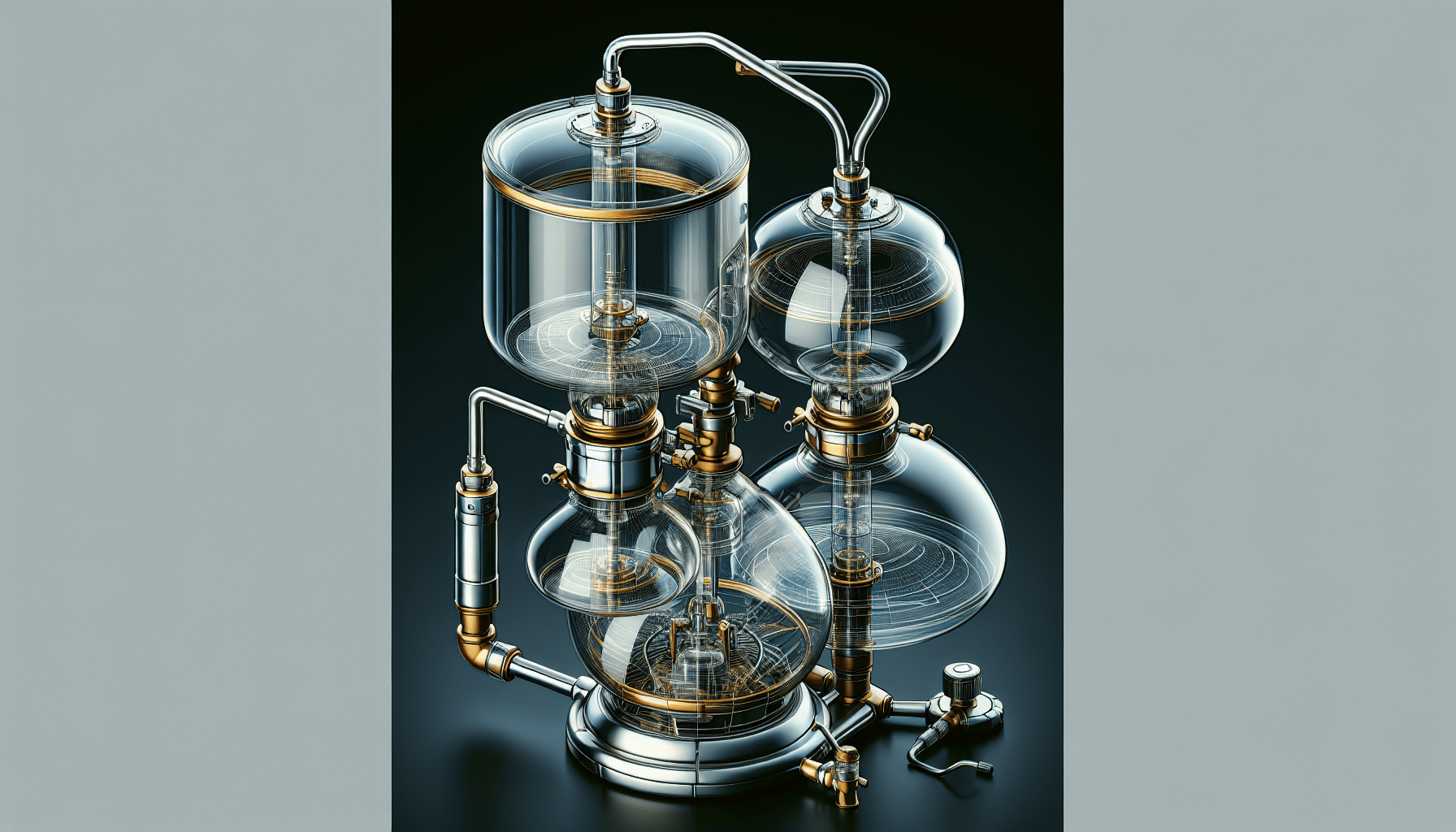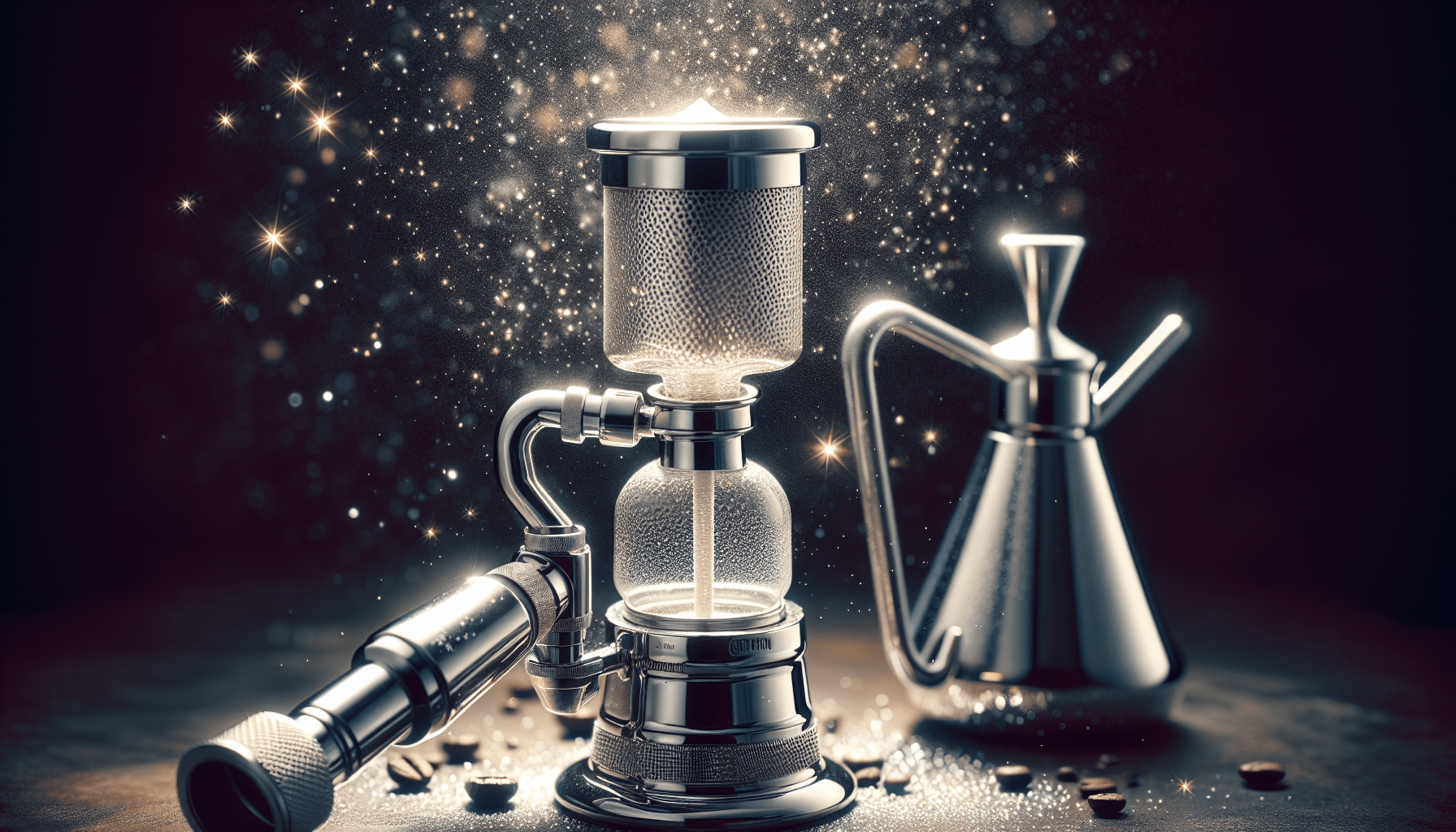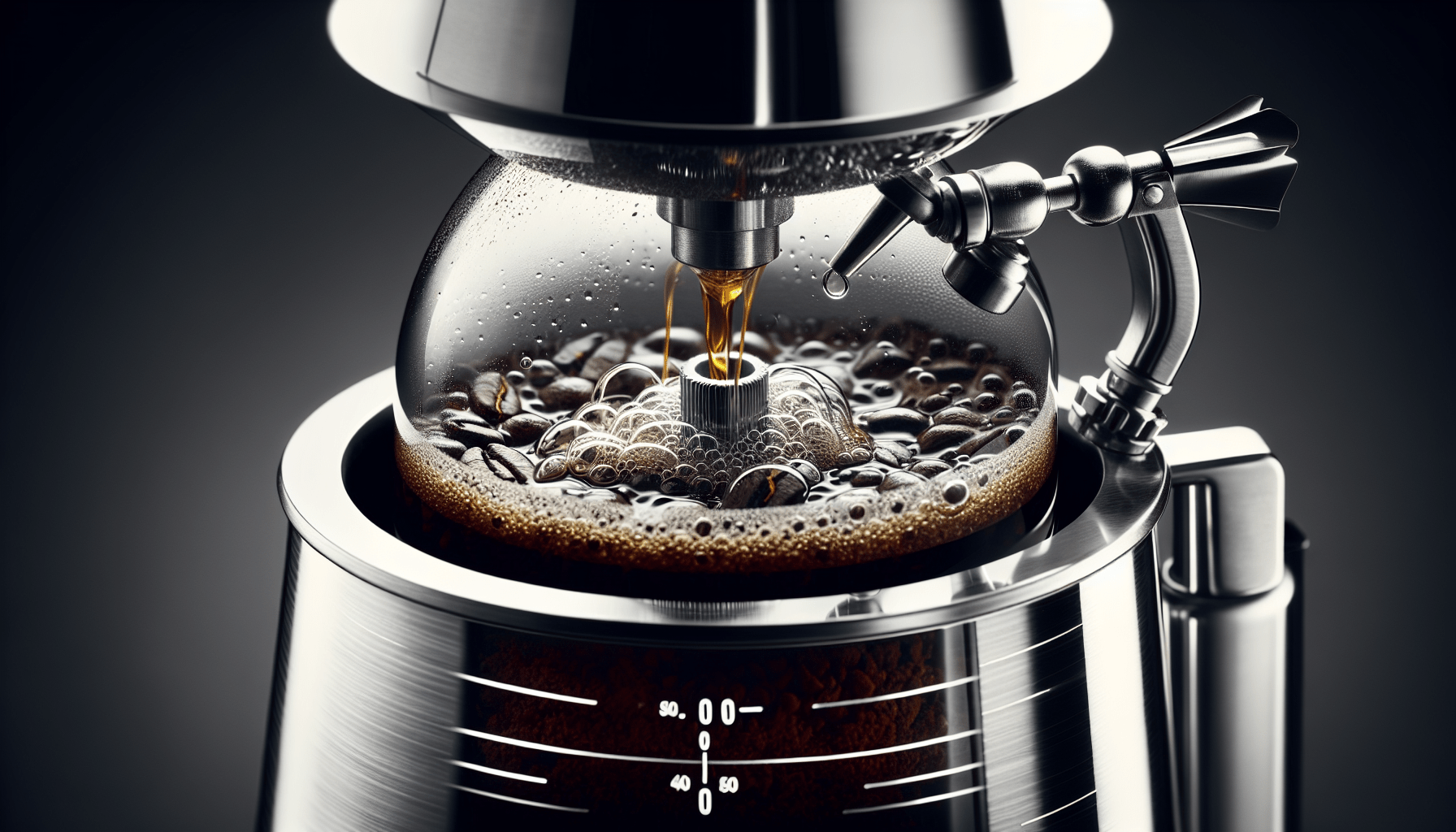Imagine waking up on a hot summer day, craving a refreshing glass of cold brew coffee. You glance at your trusty siphon coffee maker on the kitchen counter and wonder – can it be used to make cold brew? With its intricate design and mesmerizing brewing process, you can’t help but be intrigued. In this article, we will explore the possibilities and find out if your beloved siphon coffee maker can indeed deliver a delightful cold brew experience.
Introduction
If you’re a coffee lover, you probably enjoy exploring different brewing methods to achieve that perfect cup of joe. One method that has gained popularity in recent years is cold brew. Known for its smooth and less acidic flavor profile, cold brew has become a favorite among coffee enthusiasts. But can you use a siphon coffee maker to make cold brew? In this article, we will delve into the world of siphon coffee makers, understand their workings, and explore the possibility of using them for making cold brew. So sit back, relax, and let’s embark on this coffee brewing adventure together!
Understanding Siphon Coffee Makers
What is a Siphon Coffee Maker?
A siphon coffee maker, also known as a vacuum coffee maker, is a unique brewing device that uses a combination of vapor pressure and vacuum suction to extract flavors from coffee grounds. It consists of two chambers – a lower chamber that holds water and a upper chamber where the coffee is brewed. These chambers are connected by a tube and are usually made of glass or stainless steel.
How does a Siphon Coffee Maker work?
The siphon coffee maker operates on the principle of heat-transfer and vapor pressure. Initially, water is heated in the lower chamber until it reaches a boiling point. As the water vaporizes, it creates pressure, forcing it to rise into the upper chamber. The coffee grounds are then added to the upper chamber, and once brewing time is complete, heat is removed, causing the brewed coffee to flow back down into the lower chamber due to the decrease in vapor pressure. This process creates a unique and mesmerizing visual display as the coffee moves between the chambers.
Advantages of using a Siphon Coffee Maker
Using a siphon coffee maker brings several advantages to the table. Firstly, the brewing process is a spectacle to behold. The mesmerizing movement of water and coffee between the chambers adds a touch of theater to your coffee brewing routine. Additionally, the vacuum brewing method employed by siphon coffee makers ensures a cleaner and brighter cup of coffee, as the extraction process is carried out under a lower temperature compared to other brewing methods. This results in a coffee that is low in acidity and bitterness.
What is Cold Brew?
Before we delve into the compatibility of siphon coffee makers with cold brew, let’s first understand what cold brew actually is. Cold brew is a coffee brewing method that involves steeping coffee grounds in cold or room temperature water for an extended period of time, usually 12 to 24 hours. Unlike traditional brewing methods that utilize hot water, cold brew relies on time to extract the flavors and caffeine from the coffee grounds.
Traditional Methods of Making Cold Brew
Differences between Cold Brew and Regular Coffee
Cold brew coffee differs from regular coffee in various ways. One of the main differences lies in the brewing temperature. While regular coffee is brewed using hot water, cold brew utilizes cold or room temperature water. This lower temperature results in a much smoother and less acidic flavor profile. Additionally, cold brew is known to have a higher caffeine content compared to regular coffee, as the extended steeping time allows for more caffeine extraction.
Time and Temperature requirements for Cold Brew
Cold brew requires a longer brewing time compared to regular coffee. Ideally, the coffee grounds should steep in water for at least 12 hours, but some prefer even longer steeping times of up to 24 hours. The exact time and temperature can vary depending on personal preference and the desired strength of the cold brew. In general, colder water and a longer brewing time will result in a smoother and more concentrated flavor.
The Science Behind Cold Brew
Extraction of flavors and chemicals in Cold Brew
The science behind cold brew lies in the extraction process. As coffee grounds steep in cold water, the solubles in the beans, including sugars, oils, acids, and caffeine, slowly dissolve into the liquid. However, the lower brewing temperature of cold brew compared to other methods, such as hot brewing or espresso, means that fewer volatile aroma compounds are released. This results in a less aromatic, but smoother and less acidic cup of coffee.
How acidity and bitterness differ in Cold Brew
One of the key advantages of cold brew is its lower acidity compared to regular hot coffee. Acidity is responsible for the sour and sharp taste commonly associated with coffee. The cold brew method minimizes the extraction of acidic compounds, resulting in a less acidic and more mellow taste. Additionally, cold brew tends to have a lower bitterness compared to hot coffee, making it a great choice for those who prefer a smoother and more palatable cup.
Can a Siphon Coffee Maker be used for Cold Brew?
Now that we have a good understanding of both siphon coffee makers and cold brew, let’s address the question at hand – can you use a siphon coffee maker to make cold brew? The answer is yes, but with some considerations.
The Pros of using a Siphon Coffee Maker for Cold Brew
Using a siphon coffee maker for cold brew offers some advantages. The vacuum-sealed brewing process of a siphon coffee maker ensures that the extracted flavors are exceptionally clean and bright, resulting in a crisp and smooth cold brew. The unique visual display of the siphon coffee maker also adds a fun and theatrical element to the cold brew experience.
The Cons of using a Siphon Coffee Maker for Cold Brew
However, there are some limitations to using a siphon coffee maker for cold brew. Firstly, the brewing process of a siphon coffee maker is designed for hot water, not cold water. This means that you may not achieve the same level of extraction or concentration in your cold brew. Additionally, the siphon coffee maker’s smaller capacity may make it less ideal for large batches of cold brew, compared to other brewing methods specifically designed for cold brew.
Steps to Make Cold Brew using a Siphon Coffee Maker
If you are keen on using a siphon coffee maker for your cold brew adventures, here’s a step-by-step guide to get you started:
Preparing the Coffee Grinds
Begin by selecting high-quality coffee beans and grinding them to a coarse consistency. The grind size should be similar to what you would use for a French press. Make sure to measure out the appropriate amount of coffee depending on your desired strength.
Setting up the Siphon Coffee Maker
Assemble your siphon coffee maker, ensuring that all the components are properly fitted and clean. Fill the lower chamber with cold or room temperature water and place it on a heat source to bring it to a boil.
Brewing the Cold Brew
Once the water in the lower chamber has reached a boiling point, place the upper chamber on top and add the ground coffee. The heat from the lower chamber will create vapor pressure, forcing the water up into the upper chamber where it will mix with the coffee grounds. Allow the coffee to steep for the desired length of time, typically 12 to 24 hours.
Filtering and Storing the Cold Brew
Once the brewing time is complete, remove the siphon coffee maker from the heat source and let it cool down. Gently remove the upper chamber and use a filter, such as a paper or cloth filter, to separate the brewed cold brew from the coffee grounds. Transfer the filtered cold brew into a clean container and store it in the refrigerator for future enjoyment.
Tips and Tricks for Making Cold Brew with a Siphon Coffee Maker
If you’re looking to elevate your cold brew game, here are some tips and tricks to consider when using a siphon coffee maker:
Choosing the right grind size
Experiment with different grind sizes to find the sweet spot for your cold brew. A coarser grind will result in a smoother and less bitter brew, while a finer grind may yield a more concentrated flavor.
Adjusting brewing time and temperature
Since siphon coffee makers are not specifically designed for cold brew, you may need to adjust the brewing time and temperature to achieve the desired strength and flavor. Consider experimenting with shorter or longer steeping times and different heat sources to find the perfect combination.
Experimenting with different coffee bean varieties
Cold brew offers a great opportunity to explore and appreciate the unique flavor profiles of different coffee bean varieties. Try experimenting with single-origin beans or blends to discover new and exciting flavor notes in your cold brew.
Alternative Methods of Making Cold Brew
While using a siphon coffee maker for cold brew is possible, there are alternative methods that are more commonly used and specifically designed for cold brew. Here are a few popular options:
Using a French Press
A French press is a popular choice for making cold brew. Its larger capacity and fine mesh filter make it easier to prepare larger batches of cold brew with a clean and smooth finish.
Using a Mason Jar
For those who prefer a simpler approach, a mason jar can be a great option. Simply add coffee grounds and cold water to the jar, let it steep, and then filter out the grounds using a fine mesh sieve or a cheesecloth.
Using a Cold Drip Tower
For cold brew enthusiasts looking to create a true coffee laboratory experience, a cold drip tower may be the way to go. This elaborate setup uses a slow and controlled dripping process to extract flavors from the coffee grounds, resulting in a highly customizable and refined cold brew.
Conclusion
In conclusion, while a siphon coffee maker may not be the most conventional choice for making cold brew, it is certainly possible to achieve a delicious and unique cold brew experience with this brewing method. The combination of theater, clean flavors, and smooth textures makes using a siphon coffee maker for cold brew a fun and enjoyable alternative. However, if you prefer larger batch sizes or more specialized cold brew processes, alternative methods such as using a French press or a dedicated cold drip tower may be more suitable. So go ahead, get creative, and explore the wonderful world of cold brew with your trusty siphon coffee maker!




